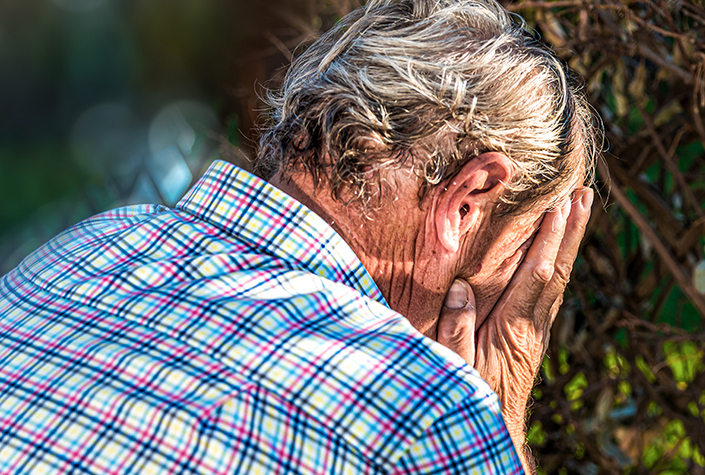Older white males: Suicide rates are rising in rural areas, study shows

Suicide is a major health concern in the United States. Yet, compared to younger adults and women, men are at a potentially greater risk for death by suicide. This could be due to delaying mental health services (or not attending at all), turning toward more lethal methods of suicide, and conforming to traditional masculine norms like emotion avoidance and self-reliance.
Although suicide rates globally are higher among older men than in any other demographic group, most suicide-related research has focused on younger populations. To better understand the extent of this public health issue for the entire older male population, Texas A&M Health Center for Population Health and Aging co-director Matthew Lee Smith and colleagues from the University of Nevada, Indiana University and the Public Health Agency of Canada, examined rates of suicide deaths by men ages 65 and older in the United States from 1999 to 2018. Their findings were recently published in the American Journal of Preventive Medicine.
The research team used data from the Centers for Disease Control and Prevention Wide-ranging Online Data for Epidemiologic Research (CDC WONDER) database to identify suicide rate differences in older men based on 10-year age groups (65-74, 75-84, 85+), race/ethnicity, method of suicide, and whether they lived in a more urban or more rural environment.
Researchers found that a total of 106,861 males older than 65 died by suicide during the study period with 24.7 per 100,000 population of the deaths occurring among those aged between 65-74 years. However, suicide was highest among the oldest age group (85+ years) at 48.8 per 100,000 population.
Additionally, researchers found that white older men had a higher burden of suicide compared to other race/ethnic groups (non-Hispanic Black, Hispanic, non-Hispanic American Indian/Alaska Native, and Asian/Pacific Islander) with a rate of 35.3 per 100,000 population. Despite a downward trend in suicide among older men of all other race/ethnic groups since 2007, rates have increased for white older men.
The most common method of suicide among older men during the study period was using firearms with a rate of 24.7 per 100,000. Additionally, 2007 saw an increase in use of firearms, suffocation and poisoning for suicide from what had been decreases up until that year.
Finally, the researchers noted that the lowest suicide rates were among Black older men across all types of urban or rural environments, whereas the highest rates were among white older men residing in very rural communities. Hispanic men had the second highest rates after white men in most urban areas, while American Indian/Pacific Islander older men had the second highest suicide rate after white men in rural populations.
Overall, the team found an increasing trend in suicide rates after 2007 during the period of 1999-2018 and noted potential contributors to the increase in suicides during this time period. One notable contributor is the economic recession that occurred in the United States during this time. Economic downturn has effects on the general population, but it can be especially hard on vulnerable populations like the older men in this study.

